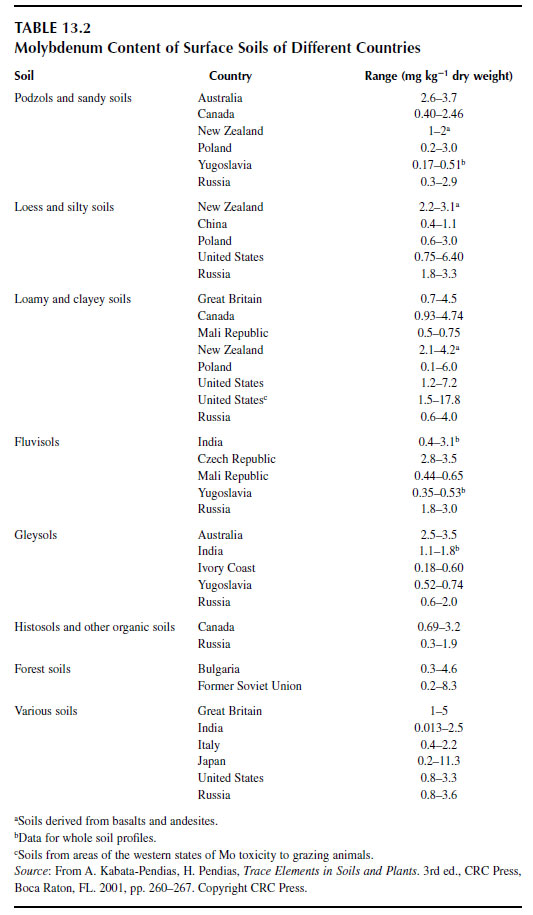Soil Molybdenum Content
The amount of naturally occurring molybdenum in soils depends on the molybdenum concentrations in the parent materials. Igneous rock makes up some 95% of the Earth crust (81) and contains ∼2mg Mo kg-1. Similar amounts of molybdenum are present in sedimentary rock (82). The total molybdenum content of soils differs by soil type and sometimes by geographical region (Table 13.2). Soils normally contain between 0.013 and 17.0 mg kg-1 total molybdenum (44), but molybdenum concentrations can exceed 300 mg Mo kg-1 in soils derived from organic-rich shale (83). Large quantities of molybdenum also occur in soils receiving applications of municipal sewage sludge (84) or in soils that are polluted by mining activities (46). Most agricultural soils contain a relatively low amount of molybdenum by comparison, with an average of 2.0 mg kg-1 total molybdenum and 0.2 mg kg-1 available molybdenum (19). |
Soils derived from granite, organic-rich shale, or limestone, and those high in organic matter are usually rich in molybdenum (85,86), and the available molybdenum content generally increases with alkalinity or fineness of the soil texture (85). In contrast, molybdenum is often deficient in welldrained coarse-textured soils or in soils that are highly weathered or acidic (83,87). The accumulation of molybdenum varies with depth in the soil, but molybdenum is normally highest in the A horizons of well-drained soils and is highest in the subsoil of poorly drained mineral soils (83). In soils, molybdenum can occur in four fractions: (a) dissolved molybdenum in the soil solution, (b) molybdenum occluded with oxides, (c) molybdenum as a mineral constituent, and (d) molybdenum associated with organic matter (85).




